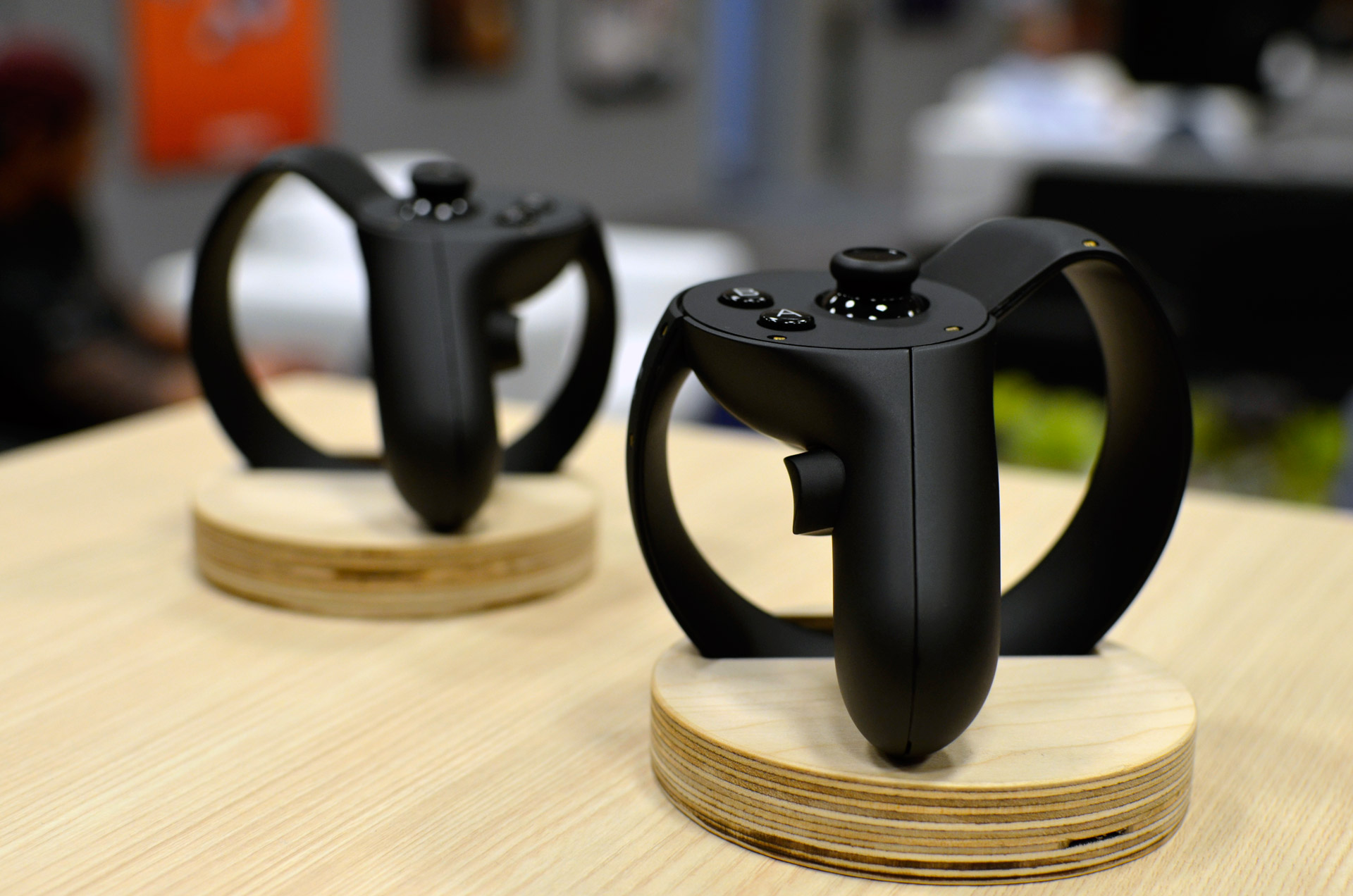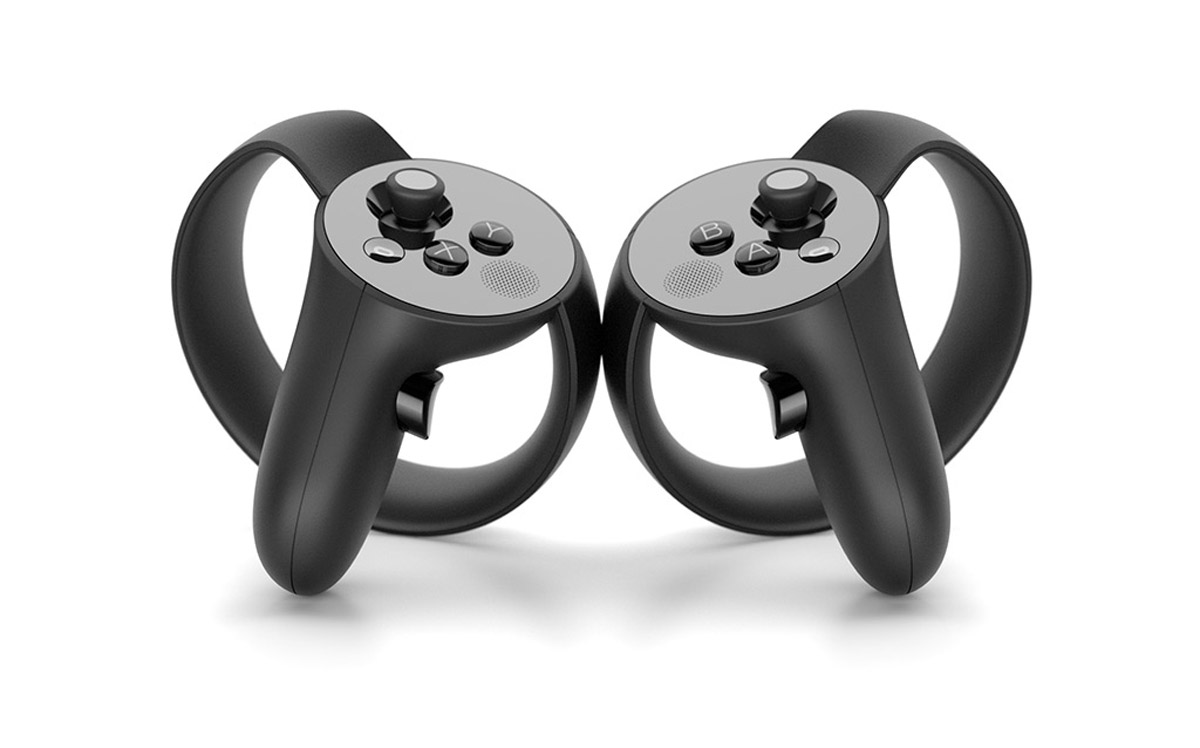Your analogy makes no sense as you'd never want or expect the fire pit to match the reactor's output. Meanwhile it's totally reasonable that a person who buys a Rift will eventually want to match the capabilities of the Vive.
Well, I'm not sure that's a safe assumption at all. Seems to me the safer assumption would be that if someone were interested in having the tracking capabilities of the Vive, they'd have bought a Vive.
The conversation was comparing like to like.
But it actually wasn't. RSP was comparing what came in the box and you and Durante felt that was unfair, and argued that if you complicated Rift's setup, it would be complicated too. While that may be true, it still doesn't change the fact that RSP had an easier time setting up their Rift.
I don't think there's been any indication of what resolutions they used for the shipping version. It may only use that in catastrophic situations, or it may not even go that low at all.
Sounds like it'll mostly depend on the game and your hardware, just like always. Maybe they'll lock the 680 out of this title, but that'd be pretty lame of them since it's hitting the required performance. Hopefully Durante can fix it if they do. <3
Image processing/tracking. Why would they do it on the GPU? The GPU of a modern PC is far more likely to be saturated during gameplay than the CPU. The CPUs of the consoles are so weak that anything that can be offloaded will.
I was under the impression the GPU excelled at that sort of thing. They did tracking on "a small fraction of an SPU" back in the day, and I thought SPU work translated well to GPGPU.
Sorry, but the rest of your response can basically be summed up as, "lolconsole," which isn't really an argument, and I think the underlying sentiment that real CPUs scoff at loads like this is undermined by the substantial CPU requirements for PCVR. Also, I'm not sure why you assume the PS4's laughable CPU would be any more overburdened than its laughable GPU already is.

Who says it's expensive and complex? It's basically two harddrive motors with IR lasers and a few IR LEDs to flash a synchronization pulse. I'd say a high resolution high FPS IR camera is a far more complicated device, and likely just as expensive.
I don't know much about the MTBF of tracking lasers, but isn't the motor the part of the hard drive which typically fails? I don't think a 60 Hz webcam is particularly expensive though.
Btw the designer of lighthouse says it is designed to withstand "multiple" 2m drops
I'll bet you a shiny nickel that my Camera outlives your Lighthouse.

This is a bit apples and oranges, CV1 and Vive use a completely different subpixel layout than the S3. Not to mention that if you read up on an article about the S3 display it's noted as a poor display overall, poor calibration, low brightness, too large a color gamut.
Fair enough. I chose that one because the relative PPI was similar to what we're dealing with here. Do you have an example you feel is more suitable?
Here's an ACTUAL picture of the CV1 screen.
That does seem to be an improvement over the S3, yes. It'll be interesting to see whether Sony tweak their panel or stick with classic RGB like the N2. Both phone panels are similar vintage, so one assumes similar improvements are at least possible, if not likely. Krej mentioned shuffling the RGB layout to reduce jailbarring, for example.
Regardless, this doesn't have any bearing on the real issue here, which is that PenTile pixels ain't pixels. Someone made a pic:
We won't have any specifics until someone tears down a PSVR unit. No one really knows how much is being wasted specifically, but comparatively to a two display solution it's the answer is at least "more".
But why? Do the lenses extend past the edges of the display? What's taking up space in the middle?
I'm not too sure about the "companies bashing their heads against the wall" part, it could very well be they just didn't prioritise room-scale. But I mean Valve is demonstrably the first to develop a commercial room-scale tracking solution for VR so I'm not sure about the animosity here.
Yes, I understand the point he was trying to make, but he forgot to say, "room scale," and accidentally credited Sony rather than distracting from them.
Passthrough camera is definetly overrated
Really? The camera was the feature I found most interesting. I hope folks come up with some clever uses for it. Is it stereo? How's the FOV?
The robustness of the tracking system is... marginal. For some users yes. For most users, probably not. Assuming that people set that up properly (and use opposing corners for room scale).
Vive's tracking is marginal? That really surprises me. Any idea what the problem is? =/
Reading some positive impressions of the Vive and Occulus are reeeally making me tempted to go all-in on a headset + PC. I have PSVR on preorder but I'm now questioning if that's the right call.
I usually go top-tier with my tech purchases, and in this case the Vive sounds like it's an experience that no other HMD can offer right now.
Two questions if anyone can help:
1) What is the current wait time if (hypothetically) I were to order a Vive right now? I'll not touch that Occulus ship window since it sounds like just about everyone is in the dark.
2) For a VR-centric PC build, is an SLI rig worth it at the moment? Or would I be future-proofed with a 980ti? I figured to check the GAF PC Build thread but any insight would be helpful.
If money is no object, the best thing would be to keep your PSVR and get PCVR too. Prolly Vive?
If you can only afford one, it's pretty much the standard PC/console debate, though Vive additionally offers room scale, if you have the space and the inclination. Rift will likely support room scale in some sense when Touch releases, but it won't be official and tracking coverage won't be quite as good as Vive. On the other hand, a lot of folks seem to think the Touch wands are pretty slick, so consider that as well.
Yes. An ethernet cable is not a displayport cable, and certainly not a mini displayport cable.
Yeah, I just tried to find instructions and couldn't, so I guess it's a pain. lol Still, I'd be tempted to make a bigger hole than mess with all of those adapters
Yes. Lighthouse is incredibly scalable in terms of both volume (with additional lighthouses) and tracked points, both without any non-linear increase in processing requirements.
Another reason it's the current holy grail in VR tracking.
Yeah, I know it scales. Sorry, I was mostly asking about implementation details.
I think that's rather unambiguous, so I'll just skip over your personal hang-up and diatribe and move on to the next point.
Yes, it's unambiguous, but you should read it again, because it doesn't say what you're claiming:
"Reprojection to fill in missed frames should be thought of as a last-resort safety net. Please DO NOT rely on reprojection to maintain framerate"
So as I said before:
"So here their advice is precisely the same as Oculus and Sony: 'Yes, ATW has the knock-on effect of compensating for dropped frames, but dont drop frames; dial stuff back instead.'"
DO NOT rely on reprojection to "maintain" frame rates, because that's not what it's for and that's not what it does. INSTEAD, drop res, and if shit gets too blurry to see, bump the res back up and use interleaving instead as it's a great safety net, thanks to the fact it provides a pretty good tradeoff.
I will soon have both of these HMD's and then I can provide a first-hand comparison across more than raw data. I'm looking forward to it!
I look forward to reading it. <3
I've pointed this out a dozen or so times before, but I'll do so again for you.
The difference is that any company is free (and encouraged, in fact) to implement OpenVR support in their devices.
Companies are explicitly prohibited from implementing, by language designed just for that, support for the Oculus API.
Fair enough, but, "We can all just get in bed with $COMPANY!" isn't what I generally picture when people talk about openness.
It's not really about occlusion, since the way they recommend you use dual cameras isn't with them positioned in opposing corners of the room, but rather side by side like a pair of stereo eyes. It's about leaving the tracking bounds all together. The cone of the camera view is actually still pretty narrow from what people can tell (they don't visualize it anymore so people can't be sure) but it's easy enough to leave the cone with your head alone - naturally your arms are going to be moving about more to the extremes of the tracking cone even when sitting. I'm expecting Oculus' endorsed camera placement will still have occlusion issues.
Hmm. Are they just sitting too close? =/




